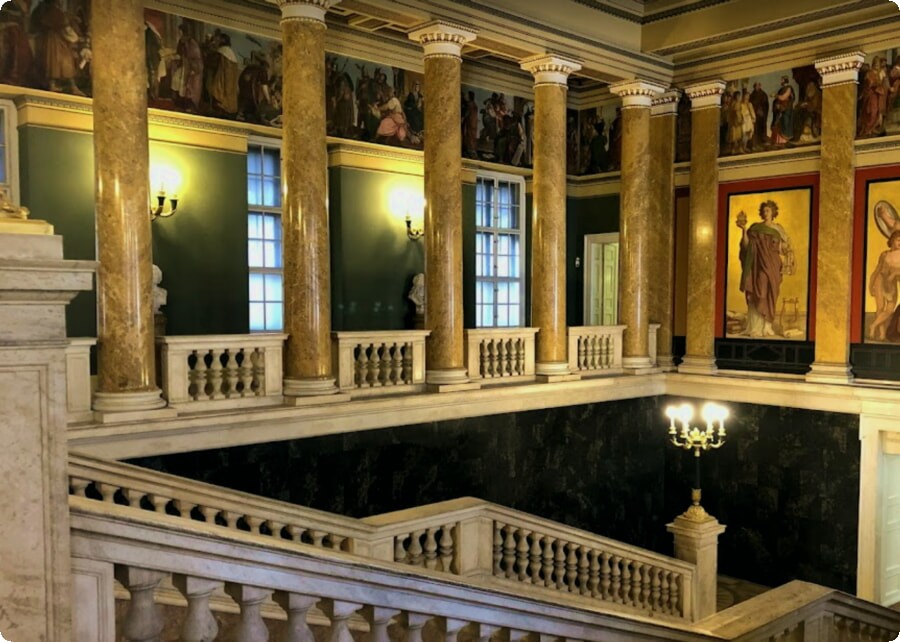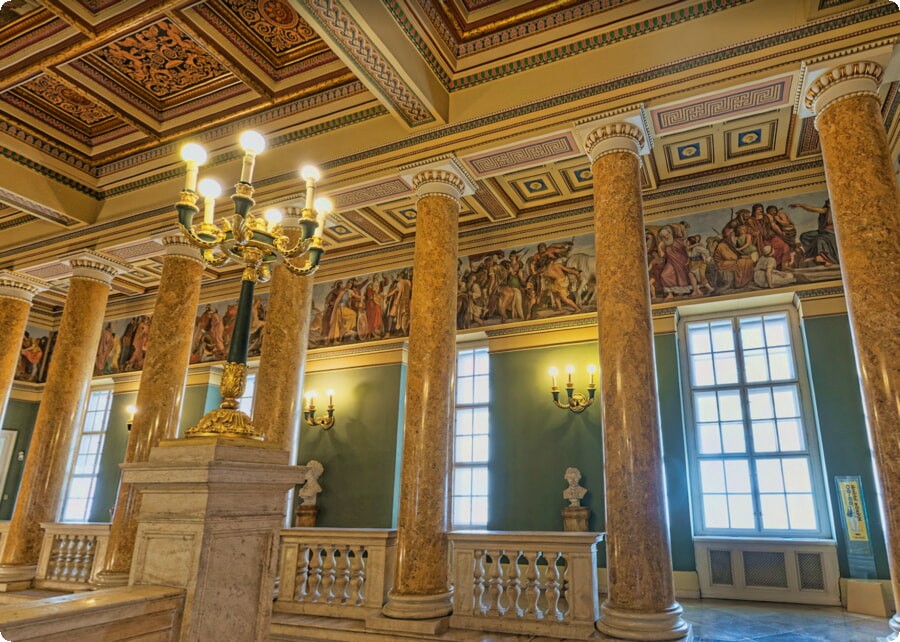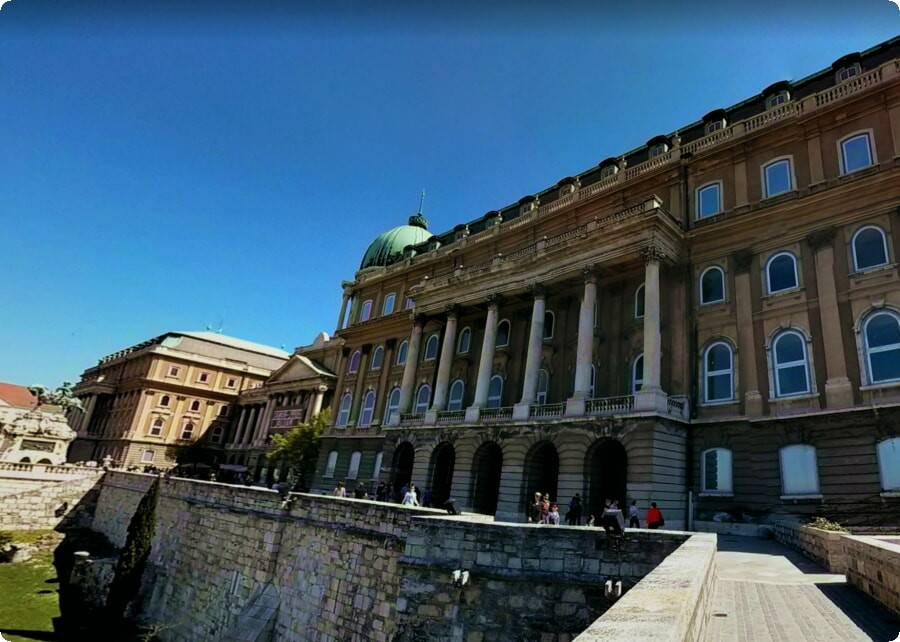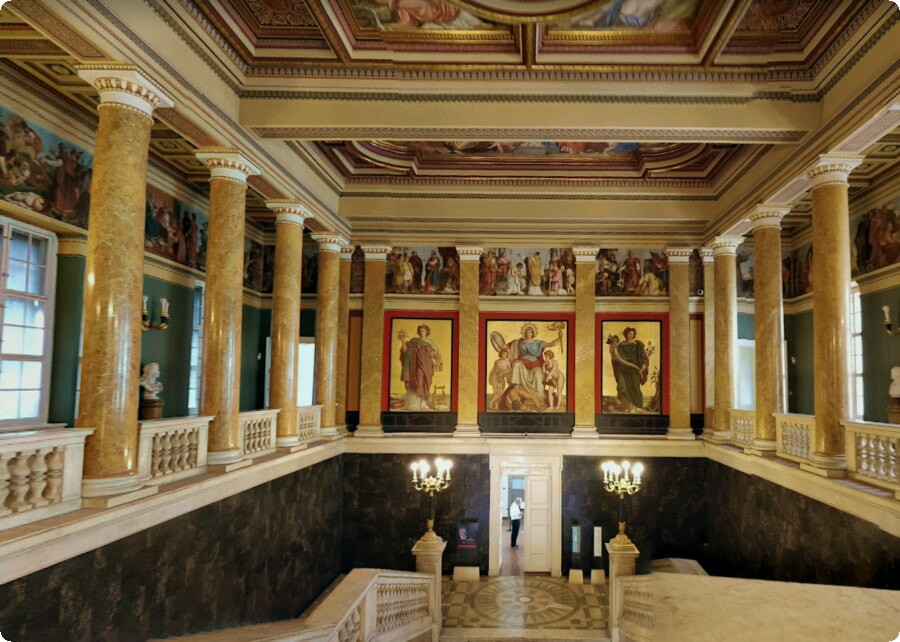Budapest is a city with an amazing array of museums that are sure to entertain and educate. Whether you’re looking to learn about Hungarian history under Communism, the world of pinball machines or Roman structures, there are plenty of options for every type of museum lover!
The Hungarian National Museum, for example, offers a deep-dive into the country’s history. Its four permanent collections trace the Carpathian Basin from the Stone Age to the end of the Communist era.
1. Hungarian National Museum
Hungary’s National Museum houses the nation’s most valuable collection of historical relics in an impressive neoclassical building. It’s a great place to learn more about the country’s rich history.
The Hungarian National Museum is a must-see for visitors to Budapest. It is the oldest museum in Hungary, founded in 1802, and holds a massive collection of historical artifacts.
It is also one of the most beautiful museums in Hungary with its neoclassical design by architect Mihaly Pollack and a spectacular interior full of marble pillars and paintings. Its entrance features a statue of revolutionary poet Sandor Petofi and Janos Arany, the author of the Nemzeti dal poem that triggered the 1848 revolution against the Habsburgs.
You can also find one of the most valuable coronation robes in Hungary here and a two-part permanent exhibition that tells Hungary’s illustrious past from prehistoric times to present day. There are also displays that show the development of Hungary’s folk culture, a great way to get an insight into this country’s history and tradition.
The museum is open every day and it is also possible to book tickets in advance online. However, there are often long queues to enter the museum. To avoid this, it is recommended to visit during the week.
For those who like to travel around Hungary by car, there is an opportunity to get a rental car in all popular locations: at the main railway stations, in the city center, at the nearest airports. Tariffs may vary depending on various factors: the duration of the rental, the class of the car, the place where the car was received. For example, at Budapest airport you can rent a compact class car from 16 euros per day, and in Budapest Downtown from 17 euros per day.

2. Vajdahunyad Castle
A favorite on Budapest tour itineraries, Vajdahunyad Castle is a picturesque attraction nestled within the shady trees, pebbled paths, and placid ponds of the City Park (Varosliget). Built in 1896 for Hungary's millennial festivities, this architecturally diverse complex features the city's agricultural museum inside the palace.
The original Vajdahunyad complex, designed by Ignac Alpar in 1896, combines architectural elements of various styles and periods. It consists of 21 separate buildings, each representing a different type of architecture, from Romanesque to Gothic and Baroque.
Many of the components of Vajdahunyad are reproductions of landmark buildings in Transylvania, Hungary's former kingdom. It also incorporates a number of Renaissance and Baroque influences in its design.
Even though the original building was a temporary exhibit made from cardboard and other materials, it quickly gained popularity among Hungarians. It was rebuilt from stone and brick in 1904-1908, transforming it into a thriving, permanent feature of the City Park.
Vajdahunyad is an intriguing and romantic attraction. Its eclectic architecture is a tribute to the country’s rich architectural heritage. The castle is a popular destination for tourists and locals alike, with several cultural events taking place here every year.

3. Budapest History Museum
The Budapest History Museum is a great place to learn about the city's past. It has a variety of artifacts from various periods, including documents from the Roman era.
The museum also features a selection of artwork from the Gothic period, including a coronation mantle from ancient Hungary. It also has a variety of exhibits on the country's culture.
The museum is split into four main sections, each of which covers different periods. The first section includes displays of Hungary's prehistory. Another is dedicated to the history of the country during the Middle Ages, and the third showcases Budapest's post-Communist era.
4. Hungarian Natural History Museum
The Hungarian Natural History Museum is one of Europe’s largest museums, with an impressive collection of more than 10 million exhibits. It houses five scientific departments: anthropology, geology and paleontology, mineralogy, and petrology.
The museum is housed in a series of neo-Classical buildings originally designed for the Military Academy of Hungary. Its displays highlight the history of man and nature in Hungary, a fin whale skeleton, and flora and fauna of the coral reefs.
There are plenty of interactive displays for kids, as well as a variety of temporary exhibitions. It also has a large, rich mineral collection and a lot of dinosaurs.
It’s a great place for families and people who love learning about the past. However, it can be confusing for tourists who are not familiar with the science behind the exhibits.
The museum is located in the former Ludovika Military Academy, and it offers a wealth of exhibitions on Hungary’s natural history and the Carpathian Basin. It is especially known for its collection of minerals from different parts of Hungary.

5. Kiscelli Museum
The Kiscelli Museum is a quirky Budapest attraction located inside the ruins of an 18th-century baroque monastery. It's an interesting place to visit, especially during the summer when concerts are held here.
There are many fascinating exhibits here, including a Baroque Sculpture Hall with sculptures erected by the Holy Trinity church group in 1712. Also, there's a collection of printing machines and machinery as well as an exhibition dedicated to the history of newspapers in Budapest.
Another popular Budapest museum is the Hungarian National Museum, located inside Buda Castle. It is a must-visit if you want to learn more about Hungary's rich history.
This is one of the most visited museums in Budapest, and it's easy to see why: It has a great selection of permanent and temporary exhibits to explore. You'll find relics from all over the country here, from ancient art to the works of famous Hungarian artists.
For a more modern take on Budapest's culture, check out the Ludwig Museum, which is home to Hungary's most influential gathering of contemporary art. It has a large collection of European art, as well as movable type machines and Hungarian abstract arts.

6. Holocaust Memorial Center
The Holocaust Memorial Center was founded in 1984 as the first free-standing museum dedicated to the Holocaust in the U.S. It has a library with over 600 oral history testimonies from Michigan-based survivors, liberators and rescuers. It also features a floor map of Europe during World War II, a restored Nazi-era boxcar and suitcases with personal items from victims.
Its permanent exhibit focuses on the story of Raoul Wallenberg, a Swedish envoy who saved thousands of Jews in Hungary during the Nazi occupation. It includes photographs and memorabilia, as well as a film on his life.
In addition, it has a library with thousands of Holocaust books. Its mission is to educate about the horrors of the Holocaust and promote human rights.
The museum is open Sunday through Thursday 9:30 am to 5 pm and Friday 9:30 am to 3 pm. Public tours last two hours and are free of charge.
The museum was designed by American architect James Ingo Freed, who wanted it to evoke a sense of unease, disorientation and separation. The dark wing, facing southeast towards Jerusalem, symbolizes the descent into darkness, while the light wing faces due east in anticipation of a Messianic Age.
7. Agricultural Museum
Hungary has a long tradition of agriculture. Its 4.3 million hectares of arable land and permanent crops produce a range of crops, including wheat, corn, sunflower and rapeseed. Animal production is also significant, with 2.7 million pigs and 40 million poultry.
The biggest agricultural museum in Europe can be found inside Vajdahunyad Castle in Budapest's city park. It was conceived by Ignac Alpar, who incorporated architectural details from various buildings of historical Hungary in this beautiful building.
Agricultural museums are an important part of national culture, as they present a rich cultural heritage to the public and stimulate scientific research on the subject of agriculture. They often highlight important aspects of the development of agriculture and its impact on society.
One of the best museums in Budapest, the Agricultural Museum is located in the stunning Vajdahunyad castle and is a great place for families to visit. It is the largest and most visited agricultural museum in the country and offers plenty of attractions.
A stairwell leads you up to the top floor where hundreds of antlers and horns hang in a shrine-like hall. This room is often empty, which means it is a quiet space to appreciate the relics of the hunt.